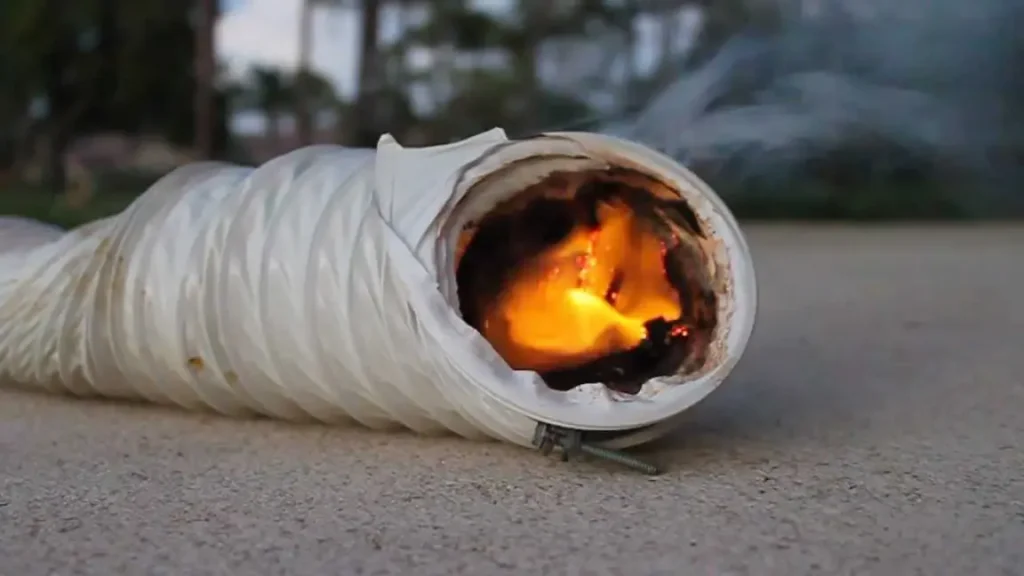Hey there! Did you know your laundry routine could be hiding a serious safety risk? Each year, thousands of homes face dangerous dryer vent fires. These incidents often start silently but can quickly become devastating. The good news? With some basic knowledge and regular maintenance, you can protect your family and property from this common household hazard.
Understanding Dryer Vent Fires: Statistics and Residential Fire Risks
Let’s talk numbers for a second. According to the U.S. Fire Administration, more than 2,900 home clothes drying machine incidents happen annually. These events cause an estimated $35 million in property damage each year. Pretty shocking, right?
The National Fire Protection Association reports that failure to clean equipment remains the leading factor in these incidents. Dryer vent fires occur most frequently during fall and winter months when machines run more often. For homeowners, understanding these statistics helps highlight why prevention matters so much.

The Impact of Clothes Dryer Fires on Home Safety
When these incidents occur, they often spread quickly throughout the home. Many families lose treasured possessions or face significant structural damage. Insurance may cover some costs, but the emotional toll can last much longer.
Beyond property damage, these situations pose serious health risks. Smoke inhalation can lead to respiratory problems, while direct contact with flames may cause severe burns. In worst-case scenarios, dryer vent fires become life-threatening emergencies.
How Lint Buildup Becomes the Leading Cause of Dryer Fires
Here’s something many people don’t realize – that fuzzy stuff you clean from the filter? It’s highly flammable. When lint accumulates in exhaust systems, it creates perfect kindling for potential incidents.
The problem worsens as air flow becomes restricted. Your machine works harder and generates more heat. Eventually, temperatures can rise high enough to ignite the collected debris. This process might happen gradually over months, or dryer vent fires could spark suddenly during a normal cycle.

Warning Signs Your Clogged Dryer Vent Might Catch Fire
Pay attention to these red flags that suggest your machine might be at risk:
- Clothes take much longer than normal to dry
- The machine feels unusually hot when running
- You notice a burning smell during operation
- Lint visible around the external vent opening
- The laundry room feels excessively humid
Don’t ignore these warning signs! They typically indicate restricted airflow and potential danger ahead.
Essential Steps to Clean the Lint Filter and Dryer Duct
Keeping your system clean isn’t complicated. Start by removing lint from the filter after every load. This simple habit significantly reduces risks of dryer vent fires and improves efficiency.
For deeper maintenance, disconnect the exhaust duct and vacuum inside thoroughly. Use a specialized brush kit to reach farther into the system. Check the exterior vent opening too – make sure it opens properly and isn’t blocked by debris or animal nests. Schedule professional cleanings annually for systems you can’t easily reach yourself.
Inside the Dryer: What You Need to Know About Fire Hazards
The internal components of your machine can harbor hidden dangers. Motors can overheat, belts can fray, and heating elements might malfunction. These technical issues sometimes create spark sources near flammable materials.
Another overlooked factor in dryer vent fires? Items left in pockets. Lighters, matches, and even certain papers can introduce additional ignition risks. Always check pockets before loading laundry. Also, avoid drying items with oil residue, as these substances can spontaneously combust under high heat conditions.
How to Prevent Dryer Vent Fires and Keep Your Home Safe
Prevention starts with smart habits. Run your machine only when you’re home and awake. This way, you’ll notice problems before they escalate. Install quality smoke detectors nearby and test them regularly.
Consider upgrading older equipment with modern safety features. Today’s models include automatic shutoff functions that activate when overheating occurs. Also, inspect your venting system – flexible plastic ducts pose higher risks than rigid metal options. Replace any damaged components immediately.
Remember, most dryer vent fires happen because of neglect. With regular maintenance and attention to warning signs, you can enjoy clean clothes without worrying about unexpected dangers. Stay safe, and happy laundering!
FAQ
How often should I have my dryer vent professionally cleaned?
Most experts recommend professional cleaning once a year for standard household use. If you have a large family, pets that shed, or use your machine very frequently, consider scheduling cleanings every six months. Regular DIY maintenance should happen between these professional services.
What's the difference between cleaning the lint trap and the actual vent system?
The lint trap is just the first defense against dryer vent fires. While cleaning it after each load is essential, the actual ductwork running from your machine to the outside collects lint too. This hidden buildup is more dangerous and requires deeper cleaning with special brushes and vacuums.
Does homeowner's insurance cover damage caused by dryer vent fires?
Most standard homeowner’s policies cover fire damage, including those caused by appliances. However, if investigation reveals negligence like years of unmaintained ducts, your claim might face challenges. Document your regular maintenance to strengthen your case if ever needed.

